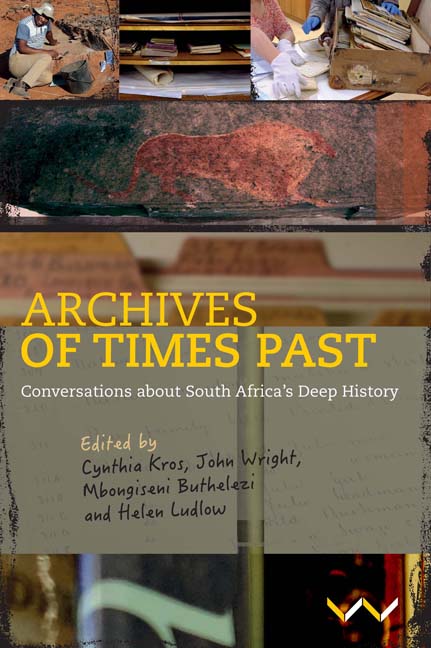Book contents
- Frontmatter
- Contents
- List Of Illustrations
- Acknowledgements
- Editorial Note
- Map
- PART I FIRST THOUGHTS ABOUT THE ARCHIVE
- PART II COMMENTARIES AND CONVERSATIONS
- PART III BECOMING EXPLORERS
- PART IV ENGAGING WITH ARCHAEOLOGY AND ROCK ART
- PART V CONFLICTING OPINIONS
- PART VI FURTHER THOUGHTS
- Glossary
- Contributors
- Index
Chapter 17 - A Neglected Archive – and an Academic Pact
Published online by Cambridge University Press: 26 May 2022
- Frontmatter
- Contents
- List Of Illustrations
- Acknowledgements
- Editorial Note
- Map
- PART I FIRST THOUGHTS ABOUT THE ARCHIVE
- PART II COMMENTARIES AND CONVERSATIONS
- PART III BECOMING EXPLORERS
- PART IV ENGAGING WITH ARCHAEOLOGY AND ROCK ART
- PART V CONFLICTING OPINIONS
- PART VI FURTHER THOUGHTS
- Glossary
- Contributors
- Index
Summary
ARCHIVES AND THE NOURISHING OF MEMORY
My earliest memories go back to Soweto, where I was born. All the indigenous languages of southern Africa, except for the Khoisan languages, are spoken in this township. The key point that I want to highlight here is that my first language, isiZulu, later became an important archive for my PhD degree studies. Languages are rooted in history. In learning a language, you learn about the history that it is part of. You learn about the people who speak it, where they come from, what their values are. The words of a language carry meanings that were made in the past. This was confirmed for me over and over again when I became a historian.
Gradually I became aware that there are many different kinds of archive. Other archives which nourish my memories are the names of the places where my primary and secondary schools in Soweto were located. The names of many places in Soweto are linked to our history, names of townships such as Dube, Moroka, Jabavu, Mofolo. Some schools are named after A.B. Xuma and B.W. Vilakazi. Even the mine dumps around Meadowlands and Diepkloof are archives, for they tell us something about South Africa's history.
The name Blood River is another example of how names of features in the landscape can be an archive. This name is fixed into the Afrikaner nationalist version of how the Voortrekkers defeated the Zulu kingdom under King Dingane at the so-called Battle of Blood River. The name dates back to 1838. So does the notion that this small rivulet – iNcome – is a river. These ideas are part of a mythology meant to enhance the grandeur of the scene and the meaning of the Voortrekker victory over Dingane's army.
Accounts of the battle at iNcome were written by Europeans, and by people who saw themselves as descended from Europeans, from the late 1830s onward. But what happened to eyewitness accounts about Impi yaseNcome/Battle of Blood River narrated by Ngoza kaLudaba, among others? Ngoza belonged to one of King Dingane's amabutho (regiments) which engaged the enemy on the battlefield.
- Type
- Chapter
- Information
- Archives of Times PastConversations about South Africa's Deep History, pp. 229 - 239Publisher: Wits University PressPrint publication year: 2022



